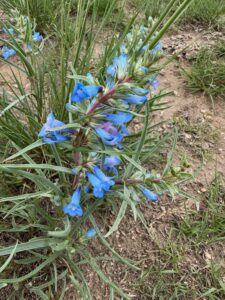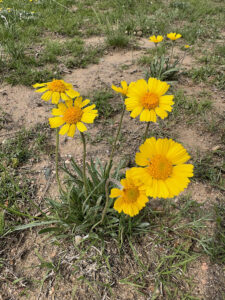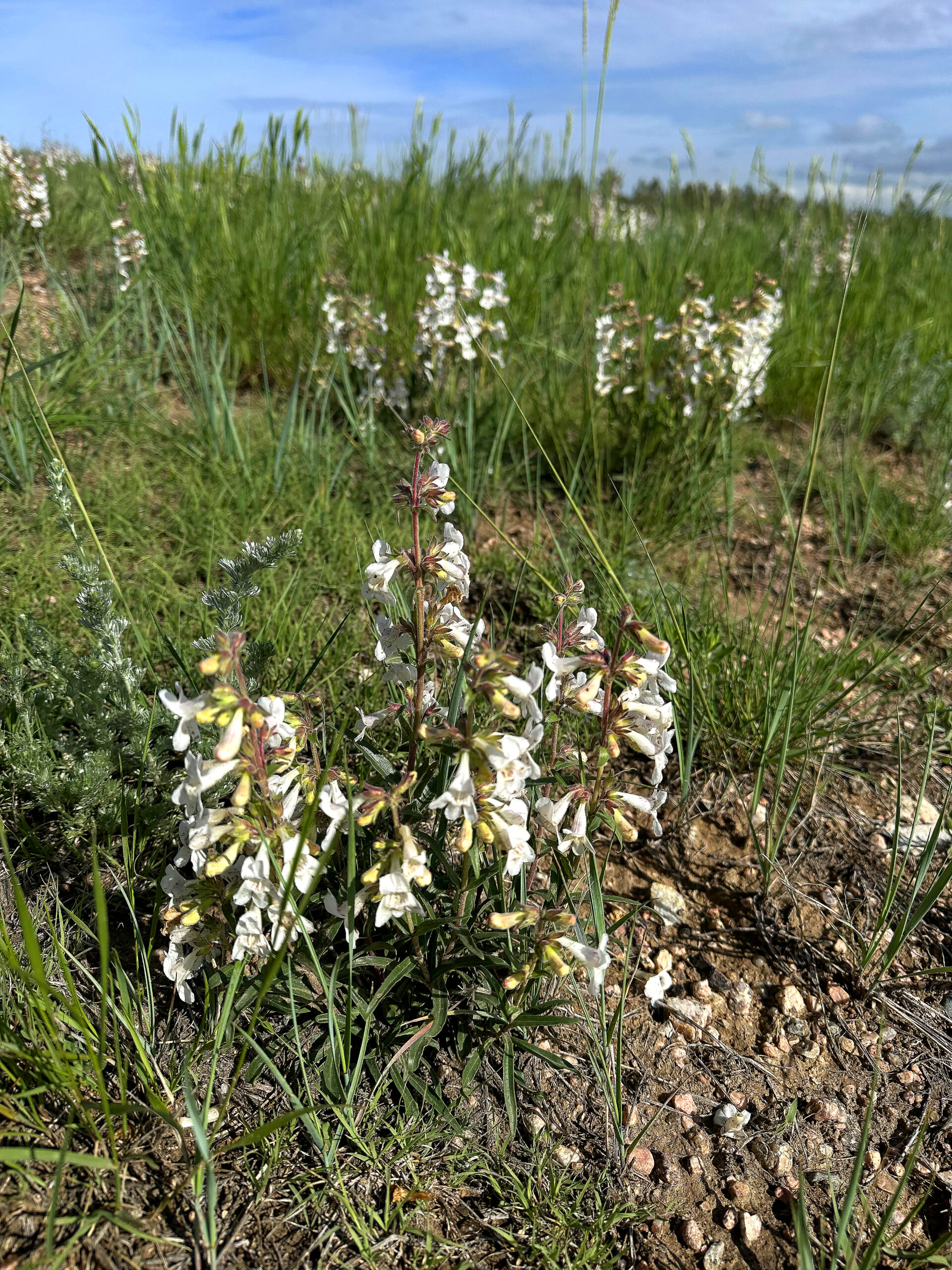IT’S A TINY SCRAP OF THE ORIGINAL, MAROONED ON THE NORTH SIDE OF CHEYENNE BETWEEN THE SKATEBOARD PARK AND THE COMPOSTING FACILITY. I have no idea how it’s escaped the incessant digging, paving, draining and all the other kinds of rape that are included in that oh-so-gentle term, “development,” but there it is— half an acre of pristine shortgrass prairie, going about its business as it has since the last glacier.
This spring has brought some relief from years of drought that have haunted the High Plains, and the little micro-prairie has responded with an outburst of gaiety— Easter daisy and sand lily followed by alpine phlox and sandwort, wild onion, globemallow, and a profusion of penstemon, white and sky blue.
It’s a dwarf garden. Even in a luscious spring like this, the natives keep low to the ground. The buffalograss and blue grama are never more than four inches high, and the flower stalks are barely more than a foot tall. Here and there, the seed heads of the needle-and-thread and squirrel tail grasses may reach as high as the middle of my calf, but the plants of the High Plains have been trained by the ceaseless wind to keep their roots deep and their heads down.
 The dogs and I pass this way every morning. As I walked through the penstemons last week, I found myself wondering whether this hillside has a certain sort of consciousness. Does it have some recollection of the bison that once passed this way? Does it remember the mammoths and the men who hunted them? At sunrise on a cool June morning, I could almost believe it. And if dreams are memories filtered through our subconscious selves, then is it possible that the penstemons are the dreams of the prairie? I walk carefully, this time of year, making sure I don’t crush the flowers.
The dogs and I pass this way every morning. As I walked through the penstemons last week, I found myself wondering whether this hillside has a certain sort of consciousness. Does it have some recollection of the bison that once passed this way? Does it remember the mammoths and the men who hunted them? At sunrise on a cool June morning, I could almost believe it. And if dreams are memories filtered through our subconscious selves, then is it possible that the penstemons are the dreams of the prairie? I walk carefully, this time of year, making sure I don’t crush the flowers.
Yesterday morning, the penstemons were gone. An energetic city employee in faithful execution of his duties had mowed the bluegrass lawn around the skateboard park, then worked his way down the slope across the skimpy cover on the hillside. Everything was trimmed evenly two inches off the ground.
Since this shortgrass community was never likely to get more than four inches high, I wondered why anyone would bother to waste the gasoline mowing it, and the motive seemed even more elusive when I looked down the hill to the lush stand of exotic brome grass that had been planted to stabilize a piece of ground after it had been bulldozed. With all the moisture, the brome was three feet tall and studded with patches of leafy spurge and toadflax, two invasive plants that are regarded as enemies by the county weed and pest authorities. Mow the prairie and leave the brome? Why would anyone do that?
 The answer came immediately: They don’t know any better. The person on the mower doesn’t know the difference between penstemon and toadflax, between prairie and weeds. Just doing his job. His supervisors probably know little more, and their supervisors even less. Aside from the demonstration of ecological ignorance, I thought, there was a more basic esthetic issue. The prairie slope had been a garden, but, with the taller vegetation removed, patches of poor soil not even the buffalograss had been able to cover were exposed. The lingering impression was less neatness than pattern-baldness or mange.
The answer came immediately: They don’t know any better. The person on the mower doesn’t know the difference between penstemon and toadflax, between prairie and weeds. Just doing his job. His supervisors probably know little more, and their supervisors even less. Aside from the demonstration of ecological ignorance, I thought, there was a more basic esthetic issue. The prairie slope had been a garden, but, with the taller vegetation removed, patches of poor soil not even the buffalograss had been able to cover were exposed. The lingering impression was less neatness than pattern-baldness or mange.
As we headed over the hill, the dogs and I, it occurred to me that the guy on the mower was more than an employee of the city; he was an agent of the culture. Like him, we don’t know what we don’t know— and we really don’t want to know. And, if I had to judge us by our actions rather than our rhetoric, I’d have to conclude that we prize neatness over beauty, control over understanding.
“Grumpy old man,” I thought as we left, “the penstemons don’t care. They’ll try again next year.”

Leave a Reply
You must be logged in to post a comment.